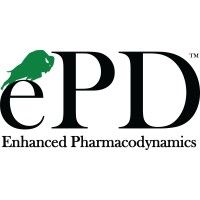AbstractIntroduction:Chronic myeloid leukemia (CML) is driven by BCR::ABL1 fusion resulting from t(9;22)(q34;q11) chromosomal translocation. Although tyrosine kinase inhibitors (TKIs) for BCR::ABL1 like imatinib, dasatinib, nilotinib, bosutinib, asciminib and ponatinib are available for CML treatment, novel treatments are needed for CML that is resistant or patients who are intolerant to available therapies. The objective of this study was to develop a mechanistic PKPD model to assess anti-CML activity of TKIs in patients with newly-diagnosed CML.Material and Methods:The PKPD model consisted of 3 parts; Population PK (popPK), leukemic stem cell (LSC) PD, and TKI effect on PD. PopPK models and PK data for TKIs were obtained from the literature. The PD model was adapted from Fassoni et al. In vitro TKI potency was measured using a CRKL assay in the presence of 100% human serum and a STAT5 assay in the presence of 10% fetal bovine serum. Effects of TKIs on LSC growth were modeled using a hyperbolic model (I = Imax*Cp^H/(IC50^H+Cp^H)). Key model parameters, Imax and H, were determined and fixed, and IC50 was fixed for each TKI. A virtual patient population using all key covariates and common demographic data was created to mimic patients with CML. The model was applied to simulate the BCR::ABL1 transcript values for patients with CML following TKI treatments over time, followed by calculating corresponding molecular response rates (MR2, MR3 [MMR], MR4, and MR4.5).Results:PopPK models for TKIs were reproduced and validated using literature data. The relationship between plasma concentrations of each TKI and BCR::ABL1 transcript levels was described by the mechanistic population PKPD model. PD model parameters, their inter-individual variability, and inhibition parameters Imax and H were constant for all TKIs, with only IC50 values varying. The model-simulated mean BCR::ABL1 levels following imatinib 400 and 800 mg QD, nilotinib 400 mg BID and dasatinib 100 mg QD agreed with observed data over a treatment period of 60 months. Further, the model-estimated MMR agreed well with the observed data from Phase 3 studies of imatinib, nilotinib, dasatinib and bosutinib over a 60-month period. For example, the MMR rates by 24- and 48-month of dasatinib and imatinib were predicted to be 66% and 45 %, and 74.5% and 53% vs. observed 64% and 46%, and 73% and 56%, respectively. Interestingly, the model a priori predicted the asciminib12-month MMR rate of 72% in patients with newly-diagnosed CML agreed with the Phase 3 reported rate of 67.7% at week 48.Conclusion:This generalizable PKPD model, using available PK and in vitro potency data, was developed and accurately predicted outcomes of five approved BCR::ABL1 TKIs in patients with newly-diagnosed CML, suggesting the mechanistic PKPD model may be used to predict efficacy for novel TKIs.Citation Format:Qi Wang, Andrew Santulli, Haili Ping, Scott van Wart, Damiette M. Smit, Donald Mager, Helen Collins, Samuel Kintz, Joseph P. Lyssikatos. Development and application of a mechanistic pharmacokinetic pharmacodynamic (PKPD) model to predict anti-chronic myeloid leukemia (CML) effects of tyrosine kinase inhibitors [abstract]. In: Proceedings of the American Association for Cancer Research Annual Meeting 2025; Part 1 (Regular Abstracts); 2025 Apr 25-30; Chicago, IL. Philadelphia (PA): AACR; Cancer Res 2025;85(8_Suppl_1):Abstract nr 4361.







